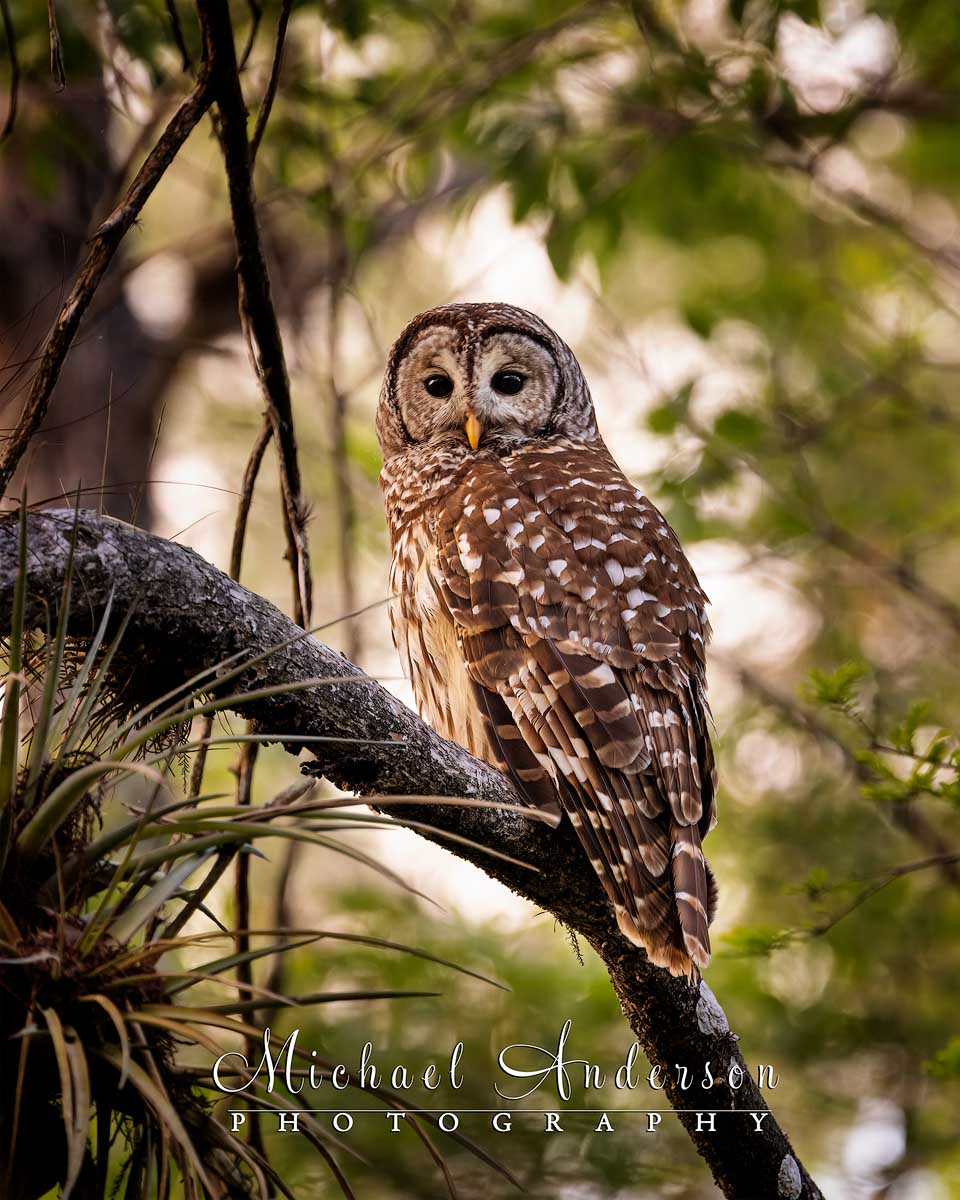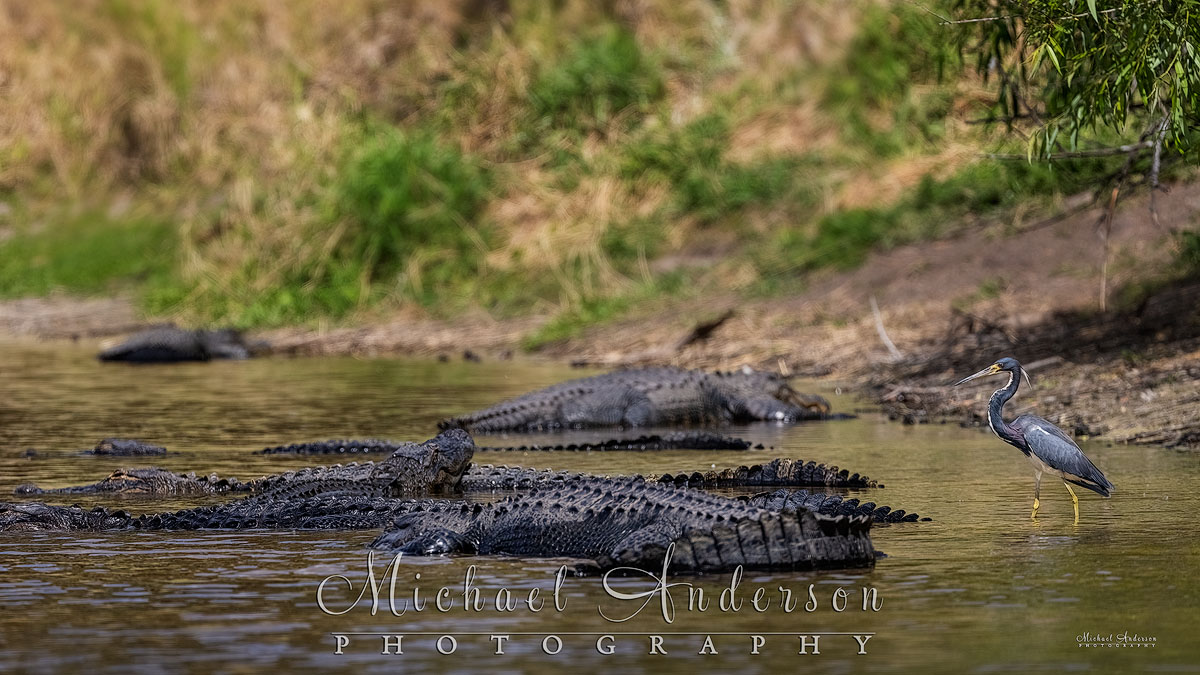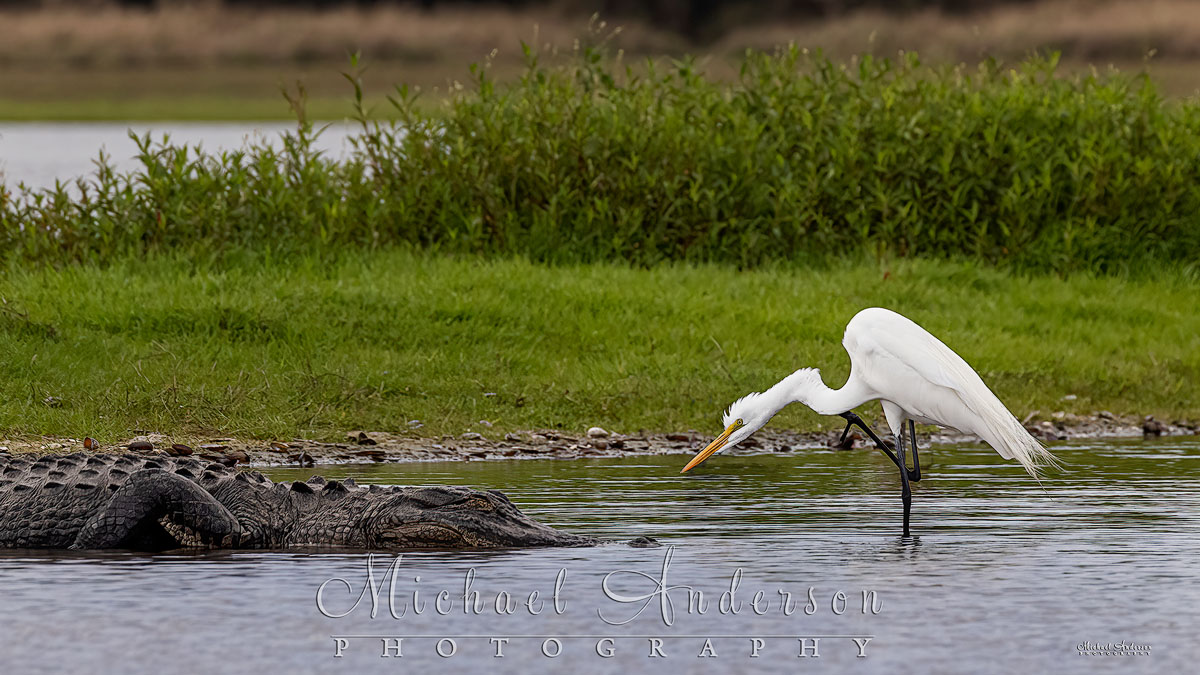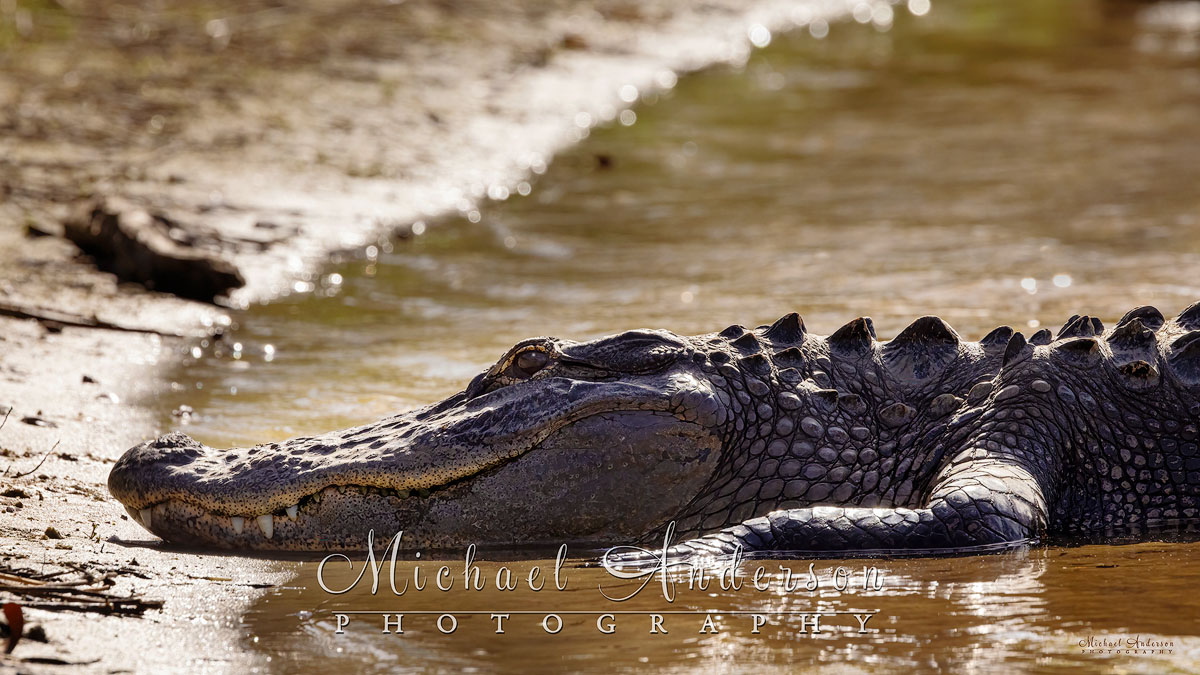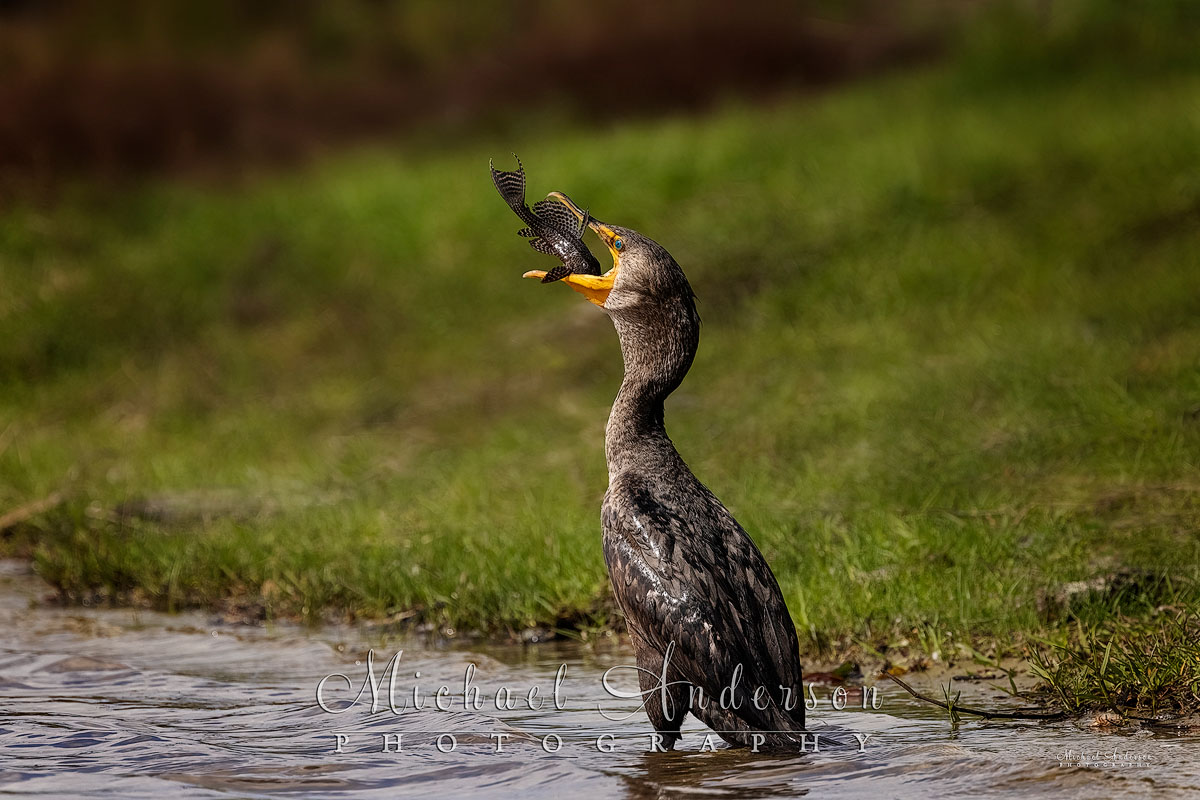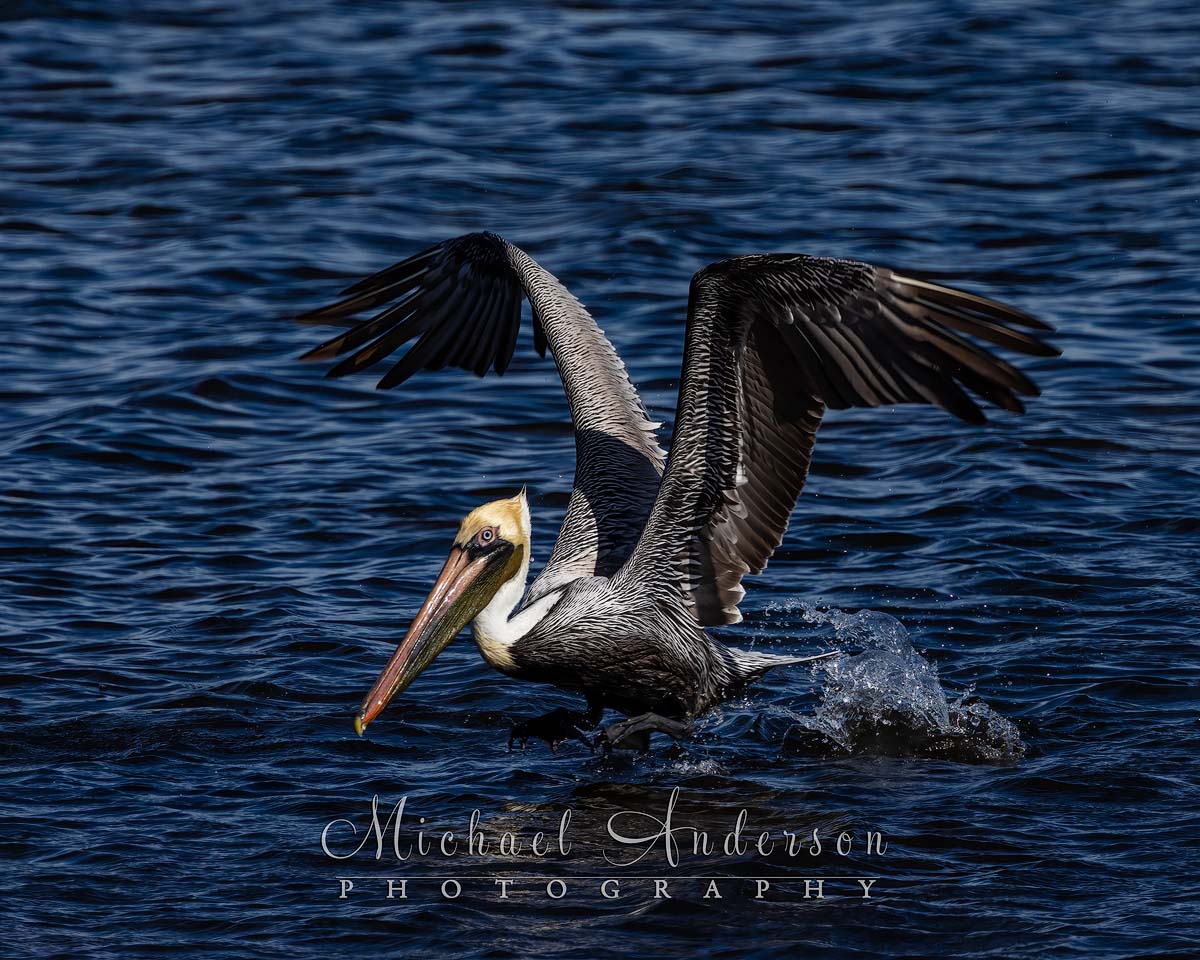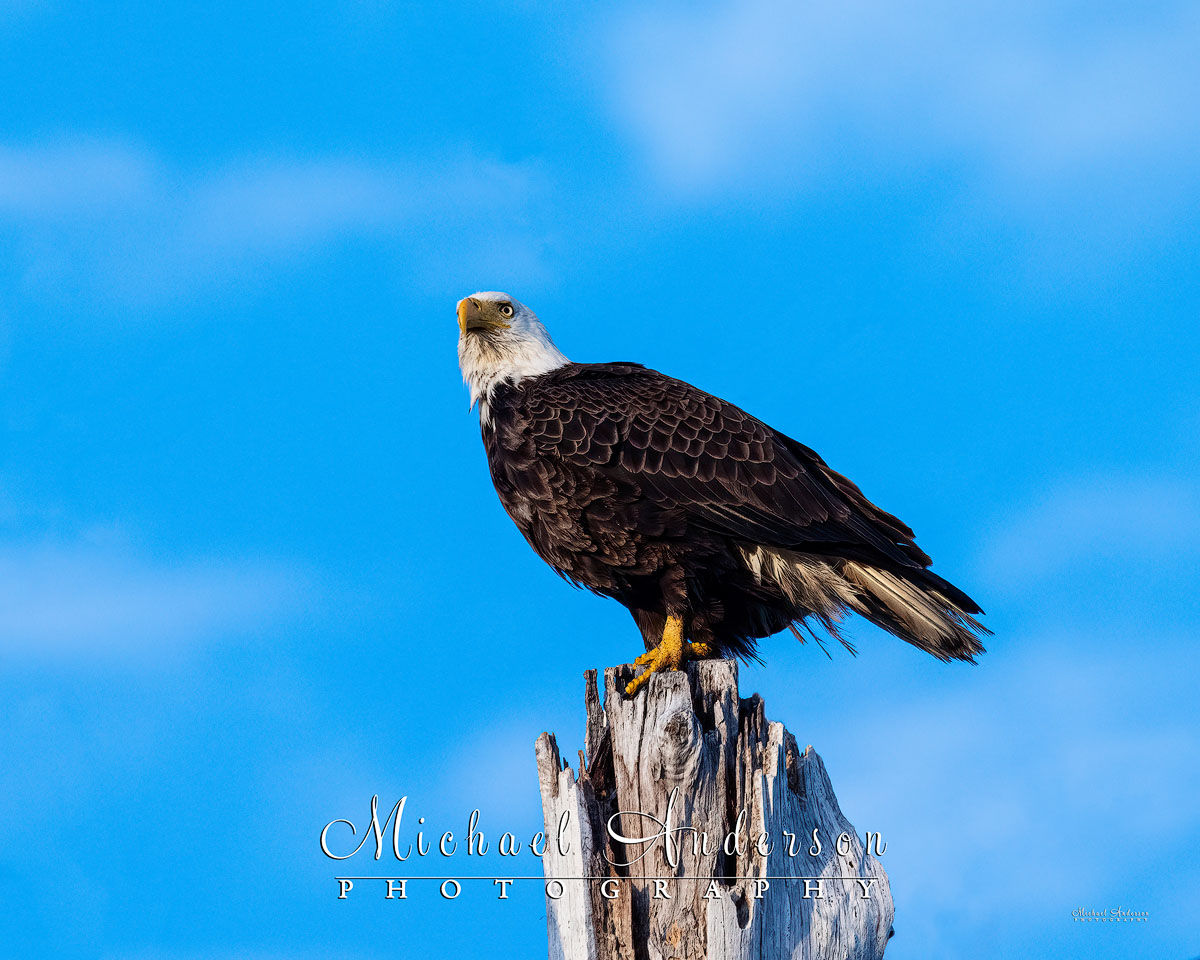Nature and Wildlife Photography in South Florida
I have been blessed with the opportunity to create nature and wildlife photography in Florida on a couple of occasions over the past few years. After our most recent trip, I felt that it was time to share some of my favorite photographs and the stories that went into creating them.
South Florida is filled with fabulous locations for nature and wildlife photography (and all-around enjoyment). The specific areas in Florida that we’ll cover here are:
- Fort Myers
- Six Mile Cypress Slough
- Myakka River State Park
- J.N. “Ding” Darling National Wildlife Refuge
We’ll be sharing insights and some of the photographs from each area. We’ll begin with Fort Myers. Throughout, there are links to a full gallery of South Florida Nature and Wildlife images that you’re welcome to take a look at. They are available for purchase if you wish as well!
In the coming weeks, we’ll be sharing photography and stories from Everglades National Park, Big Cypress National Preserve, the Florida Keys, and Ten Thousand Islands Marsh Trail.
Click Here to Visit Our Florida Nature and Wildlife Photography Gallery
Nature and Wildlife Photography in Fort Myers, Florida
Twins Spring Training Baseball, golf, beaches, and warm, sunny weather. That’s what most of us think of Fort Myers, Florida in the wintertime. That was me too, until our visit there in the winter of 2022!
Our lifelong friends, Wayne and Sally, have a “winter cabin” in Fort Myers. We’re very blessed that they encourage and welcome us to stay with them! Their beautiful home is on a wonderful golf course, The Club at Gateway. Right behind their home is a small lake. In addition to being pretty to look at, this is a large water hazard for the golf course. That “water hole” is where we’ll begin our stories about nature and wildlife photography in South Florida.
A remarkable amount of nature and wildlife that calls Fort Myers home. Much of the wildlife that you’ll see are birds of all shapes and sizes. At Wayne and Sally’s, we sit out on their lanai and watch the birds and other critters while enjoying the warm Florida weather. In the early mornings, when the light is better, I’ll open the gate and get closer to the action with my camera in hand.
Introducing, Tripod, the Alligator
Oh yeah, there are also alligators in that water too! One of whom has been affectionately named “Tripod” by the golfers. Tripod got in a wee bit of a disagreement with another gator and he’s now missing a leg! So, as much as I prefer to get down very close to the waterline when I photograph birds, there’s no way I’m going to be that close to a potential alligator encounter! Gators are way too sneaky!
I’ve seen and photographed so many bird varieties there that I’ve started a list of them. My Florida list includes bald eagles, osprey, Lesser Scaup, Black-crowned Night Heron, Tricolored Heron, Anhinga, Glossy Ibis, Black-bellied Whistling-Duck, Double-crested Cormorant, White Ibis, Great Egret, Great Blue Heron, and many more!
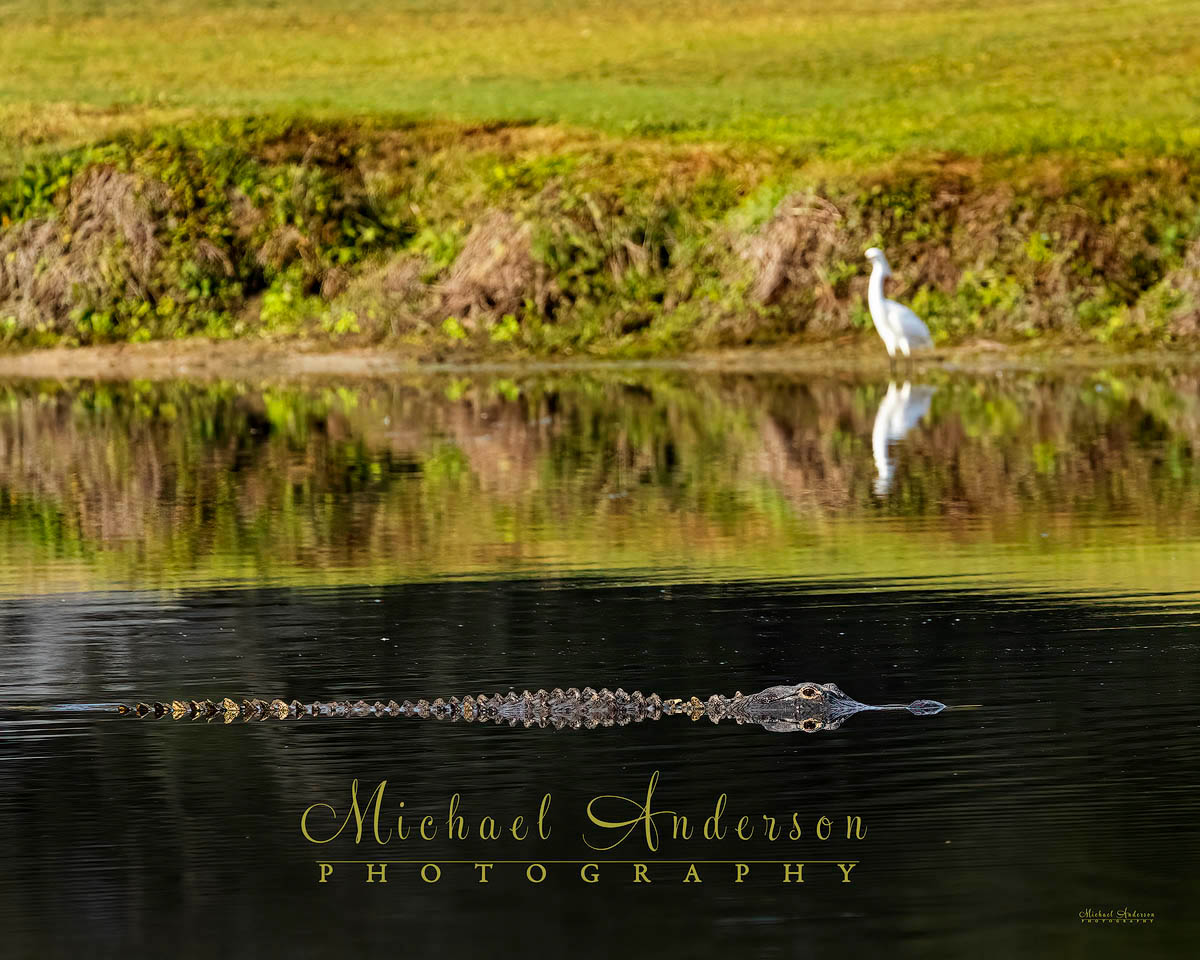
This is “Tripod.” He’s an American Alligator who likes to cruise the water hole at Wayne and Sally’s.
Nature Photography at Six Mile Cypress Slough
2024 was our second visit to Wayne and Sally’s home in Fort Myers. During our visit back in 2022, they introduced us to Six Mile Cypress Slough. This is a remarkable nature and wildlife area in Fort Myers. I was very excited to revisit the area twice more in 2024!
Six Mile Cypress Slough is a beautiful nature preserve right in the middle of Fort Myers, Florida. It’s not very far from the Minnesota Twins’ Hammond Stadium at the Lee County Sports Complex. The Slough is a long, narrow wetland with slow-flowing freshwater. The entire Preserve is eleven miles long, about one-third of a mile wide, and contains both wetland and upland areas.
Two Seasons – Wet and Dry
Like many of the natural areas in Florida, it changes appearance with the seasons. The dry season is from October to May, and the wet season runs from June to September. The Slough catches and slowly filters rainwater on its way towards Estero Bay. The animals that you’ll find there are well adapted to life in wetlands. You’ll often see alligators, several varieties of turtles, otters, and wading birds that live at the Slough year-round. Additionally, many types of migratory birds use the Slough as a rest stop and feeding area in the dry season. Many interesting varieties of seasonal plants, flowers, and butterflies can be enjoyed there as well.
Open Year-Round
Six Mile Cypress Slough is open year-round, from dawn to dusk. The entry fee is free with your paid parking fee. If you have a chance to visit, the Interpretive Center is a wonderful place to begin. They have great exhibits, a nice gift shop, and very informed volunteers to help out and answer questions.
Then, you can set out to explore the 1.2-mile boardwalk. The boardwalk has an amphitheater, seating areas, shelters, observation decks, and a photo blind. There are educational displays and signs all along the way as well.
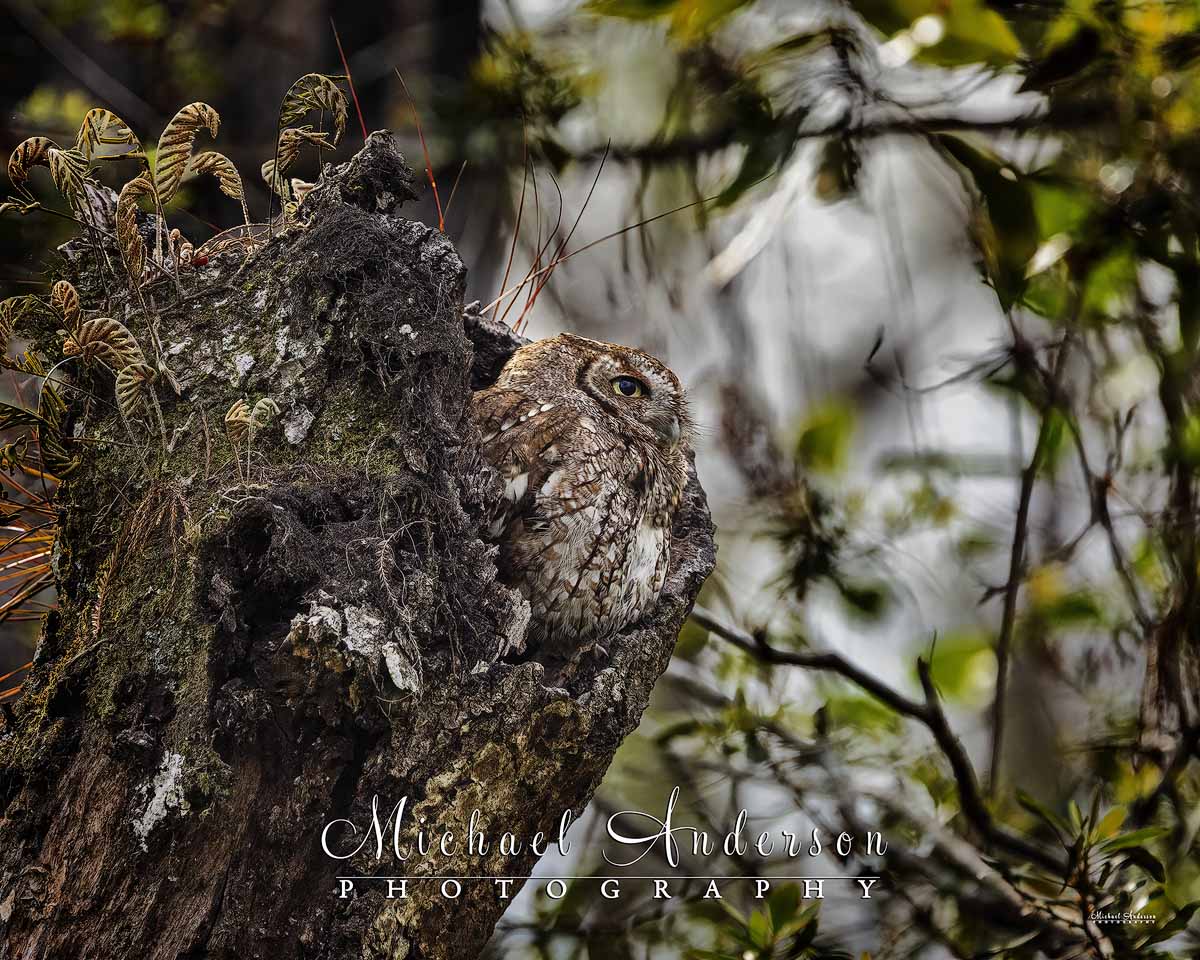
An Eastern Screech Owl resting in a tree cavity. This little dude is probably less than 8 inches tall!
I was lucky enough to photograph my first Barred Owl there in 2022. In 2024, I photographed a tiny Eastern Screech Owl and a nesting pair of Red-shouldered Hawks. I also had a ridiculously close photographic encounter with the Pileated Woodpecker that you see below!

A Pileated Woodpecker and its breakfast. This magnificent bird could have cared less about my presence. He was less than 20 feet from me (and didn’t care)!
Wildlife Photography at Myakka River State Park
The next fantastic location for nature and wildlife photography in South Florida is Myakka River State Park. On our trip in 2022, Joannie and I took an early morning road trip there for the main purpose of seeing American Alligators at a place they call Deep Hole. We were not disappointed!
It was the dry season, and unfortunately, that meant the water levels were too low for any of the water tours the park offers. However, the dry season means that there were very few bugs. The big bonus is that it wasn’t 100 degrees either! If you arrive at the park by 8:00 am when the gates open, you might be among the 30 visitors a day who are permitted to visit Deep Hole!
The Deep Hole
Deep Hole is a 131-foot sinkhole at the south end of Lower Myakka Lake at Myakka River State Park. The area is designated as a wilderness preserve and is limited to only those 30 visitors each day. Deep Hole is where you’ll find dozens of gators hanging out in and by the water. There’s a fair amount of other wildlife there as well, especially birds.
Distance-wise, it’s quite a hike to get there from where you park your vehicle. But, as we found once we got there, it was worth it! Joannie isn’t a big alligator fan, but she even thought it was pretty cool!
If you decide to make that trek someday, we can tell you that you’ll need to bring lots of drinking water, sunscreen, a hat and/or an umbrella, and good hiking shoes. It’s not rough terrain, just a long hike in hot weather.
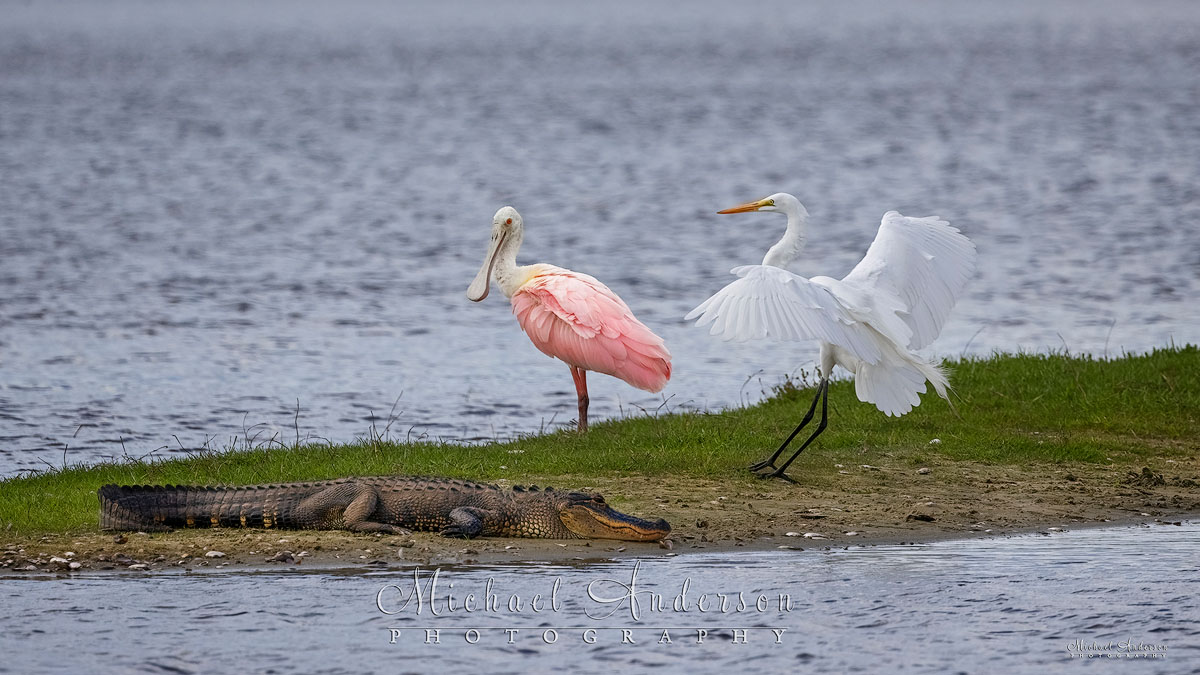
An American Alligator watches intently as a Great Egret lands nearby. A pretty Roseate Spoonbill is there too.
Click Here To Visit Our Florida Nature and Wildlife Photography Gallery
Nature Photography at J.N. “Ding” Darling National Wildlife Refuge
On our recent trip, Joannie and I took a day trip to visit Sanibel Island. While there, we scouted out J.N. “Ding” Darling National Wildlife Refuge. It was late in the day, and very windy when we arrived. However, we were able to drive the scenic four-mile Wildlife Drive twice before heading back to Wayne and Sally’s that night. I would like to return someday (in less windy conditions). It is a beautiful area!
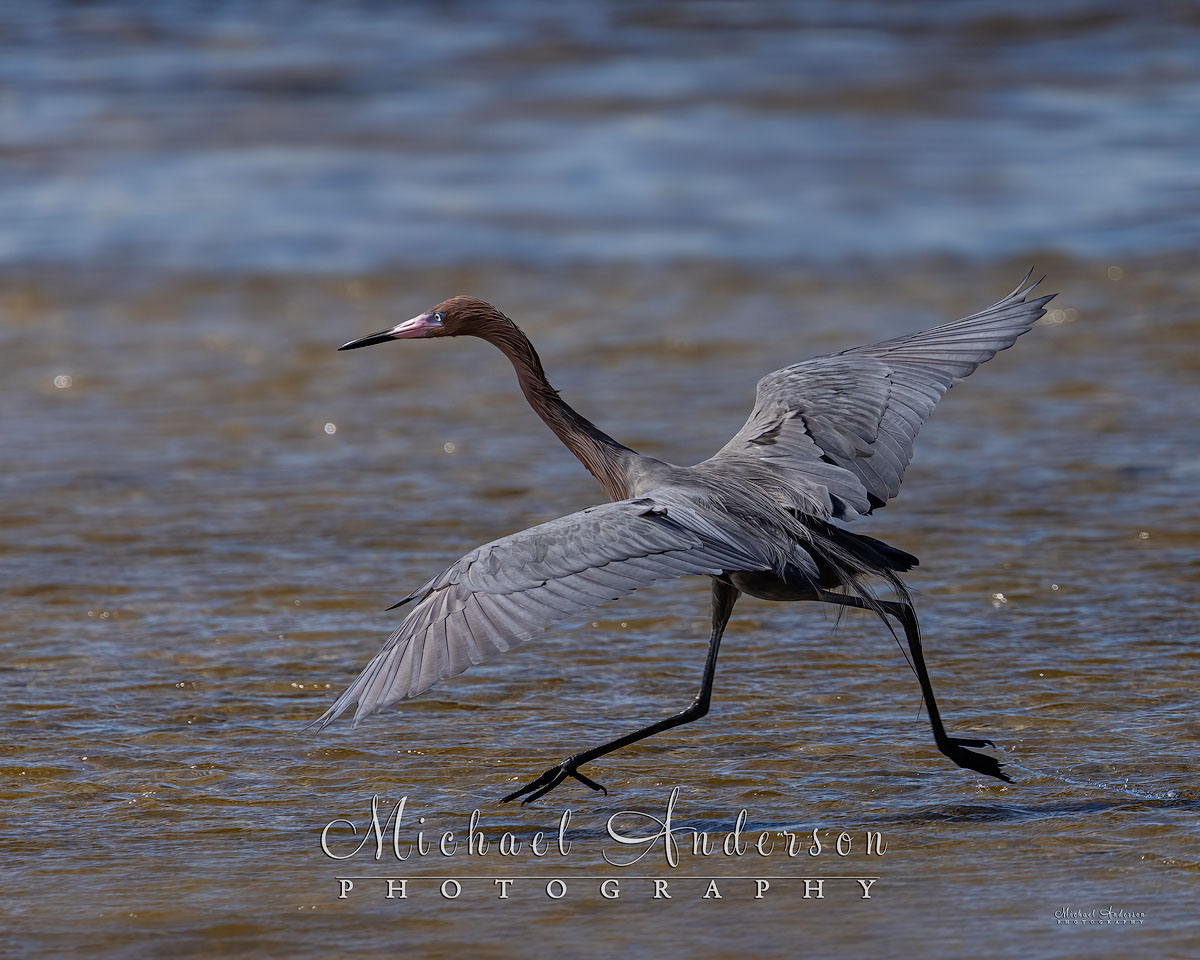
Upon our arrival at Ding Darling, the ranger told us that there had been sightings of a couple of Reddish Egrets, which he said was not a common occurrence. It didn’t take long to find this one, dancing about on the water looking for food!
You can walk, bike, or drive the four-mile Wildlife Drive, and there is access to three walking trails and two canoe launches from it. You can walk or bike the Bailey Tract too. It’s an interior part of the refuge dominated by freshwater plants and wildlife. We didn’t get a chance to do that on this trip, hopefully, we will next time. The refuge is home to more than 245 bird species, so birdwatching and photography can be fabulous!
Jay Norwood “Ding” Darling
The refuge was established to safeguard and enhance the wildlife habitat of the barrier island of Sanibel. Its main purpose is to protect endangered and threatened species and to provide feeding, nesting, and roosting areas for migratory birds. It is part of the largest undeveloped mangrove ecosystem in the United States.
Ding Darling is world-famous for its spectacular migratory bird populations. More than 40 percent of the refuge is a Congressionally designated wilderness. The refuge was renamed in 1967 for conservation pioneer, Jay Norwood “Ding” Darling, who was instrumental in its creation.
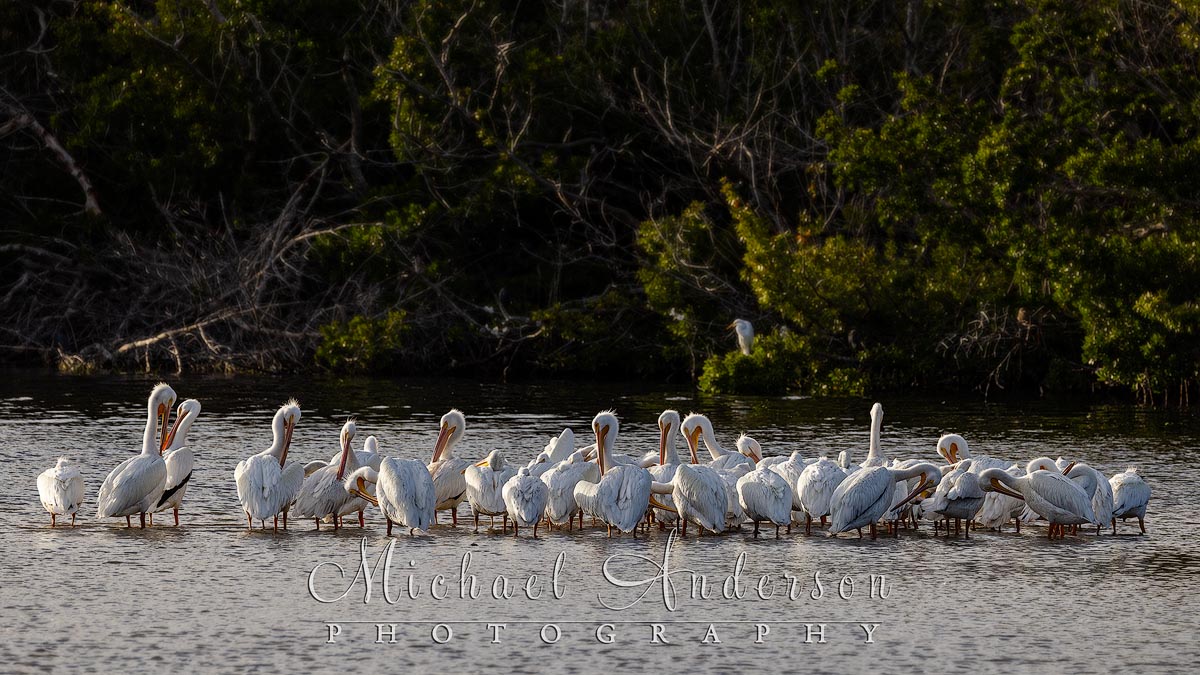
There’s lots to see at Ding Darling National Wildlife Refuge! Here’s a pod of American White Pelicans getting ready to settle down for the night.
If At First You Don’t Succeed, Try, Try Again
Throughout our entire 2024 trip, I was hoping to get a quality opportunity to photograph Roseate Spoonbills. However, those pretty birds were very elusive on this trip. We spotted a couple of them, with a group of Willets, at Ding Darling (as seen below). However, they were very far away. Maybe next time!
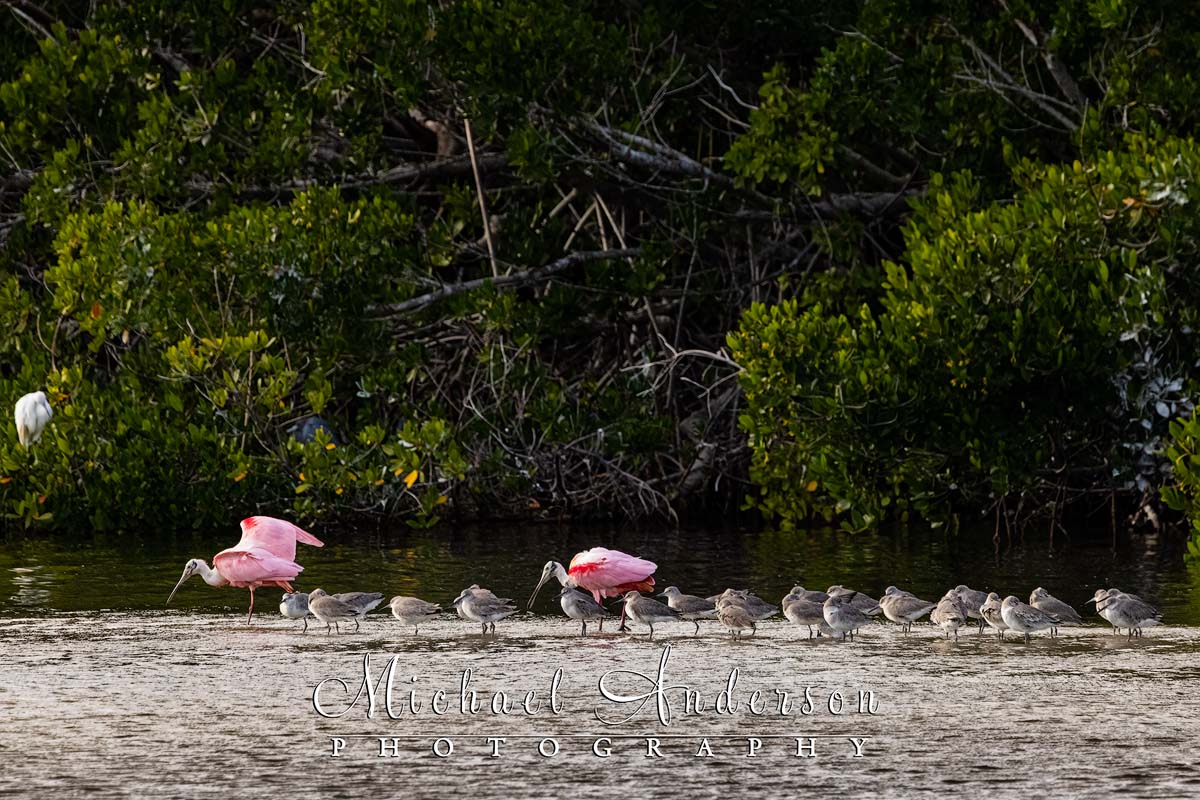
This was as close as we could get to a Roseate Spoonbill on our entire trip (which was not very close). These two colorful birds were spotted, along with a bunch of Willets, at Ding Darling.
A Surprise Sighting!
Here’s a fun little mini-story for ya. On the way back to Fort Myers, while sitting in stop-and-go traffic on Sanibel Island (mostly stop), I captured the image below of a bald eagle. It was taken from my driver’s seat in the rental car with my Canon R5 camera with the Canon RF 800mm f/11 IS STM lens!
We weren’t going anywhere and the eagle wasn’t at that moment either. So I grabbed my camera from the back seat, rolled down my window, and got the shot! Not an amazing image of a bald eagle, but a pretty nice one nonetheless!
Much More To Come!
In the coming weeks, we’ll be sharing many more photographs and their stories from more Florida locations. These will be Everglades National Park, Big Cypress National Preserve, the Florida Keys, and the Ten Thousand Islands Marsh Trail.
Until then, thank you for spending time on our website. Please contact us if you have any questions. Thank you! – M&J




